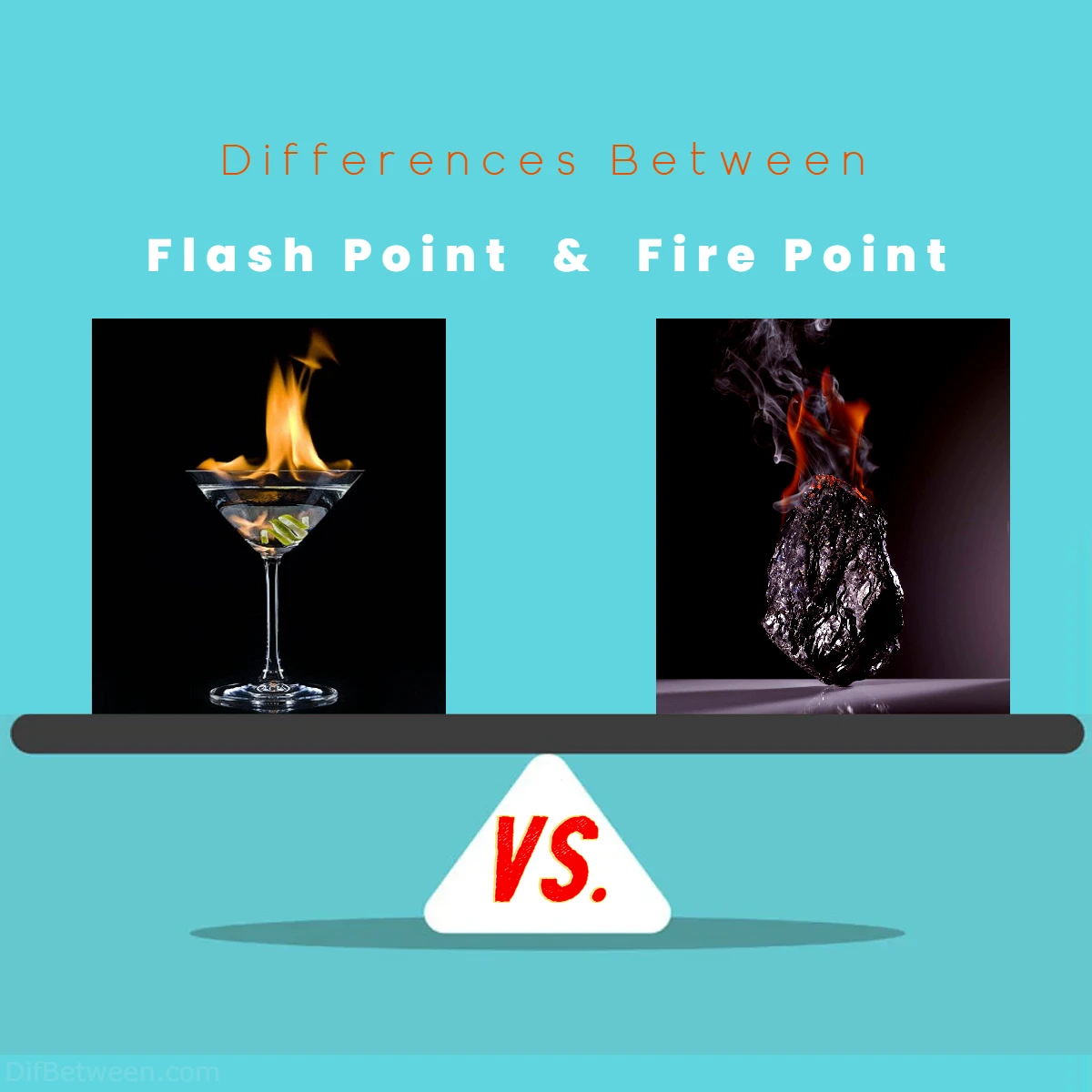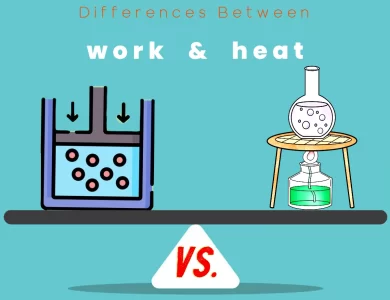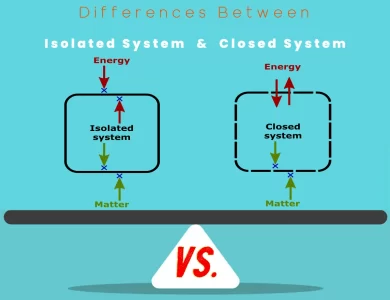
| Characteristic | Flash Point | Fire Point |
|---|---|---|
| Definition | Temperature at which vapors ignite | Temperature for sustained combustion |
| Purpose | Initial ignition assessment | Assessing fire severity |
| Safety Focus | Safe handling and storage | Firefighting and emergency response |
| Testing Methods | Standardized, open/closed cup tests | Adapted from flash point tests |
| Regulatory Implications | Common in regulations | Less common but vital for planning |
| Significance in Industries | Transportation, storage, prevention | Firefighting, emergency response |
| Safety Applications | Storage, transportation, prevention | Firefighting, evacuation, planning |
Flash Point and Fire Point might sound like phrases plucked from a superhero movie, but in reality, they are the unsung heroes of safety regulations, risk management, and emergency response. These terms are like guardians, quietly watching over us in our everyday lives, from the transportation of fuel to the storage of cleaning solvents.
Differences Between Flash Point and Fire Point
The main differences between Flash Point and Fire Point lie in their definitions and applications. Flash Point signifies the temperature at which a substance’s vapors can ignite, focusing on the initial point of ignition, making it crucial for safe handling, storage, and transportation of flammable materials. In contrast, Fire Point goes beyond ignition, representing the temperature at which a fire can sustain itself, offering insights into fire severity assessment, firefighting strategies, and emergency response planning. While both parameters are integral to fire safety, their distinct purposes make them vital in different contexts within industries dealing with flammable substances.
Defining
Flash Point: The Ignition Threshold
Flash point is the temperature at which a liquid substance produces enough vapor to ignite when exposed to an open flame or spark. It’s a fundamental parameter used to classify and evaluate the flammability of liquids. The flash point serves as an indicator of how easily a substance can catch fire under specific conditions, making it a critical piece of information for industries dealing with combustible materials.
Flash point is often measured in degrees Celsius (°C) or Fahrenheit (°F) and is determined through standardized testing methods. It is an essential safety parameter for the transport, storage, and handling of flammable liquids. Understanding the flash point of a substance helps prevent accidents and ensures the proper storage and transportation practices are in place.
Fire Point: Sustained Combustion
Fire point, on the other hand, is the temperature at which a liquid substance can sustain combustion once ignited. In simpler terms, it’s the temperature at which the substance will continue to burn if the ignition source is not removed. While flash point indicates the minimum temperature for ignition, fire point represents the temperature at which a fire can be sustained.
Just like flash point, fire point is expressed in degrees Celsius (°C) or Fahrenheit (°F). This parameter is crucial for assessing the severity of a fire hazard. It helps determine the level of danger associated with a particular substance in case of a fire incident, aiding in the development of effective fire safety protocols.
Significance
Understanding the significance of flash point and fire point is vital in ensuring safety in various industrial processes and everyday situations. Let’s explore their roles in more detail.
Flash Point’s Significance
The flash point of a substance provides critical information that has several practical implications:
- Safe Handling and Storage: Knowing the flash point helps determine the appropriate storage and handling conditions for flammable liquids. Substances with low flash points require extra precautions, such as refrigeration or sealed containers, to prevent accidents.
- Transportation Safety: In the transportation of hazardous materials, flash point is a key factor in classifying substances and selecting suitable containers and transportation methods. Regulations, such as those set by the Department of Transportation (DOT) in the United States, are often based on flash point values.
- Fire Prevention: Understanding the flash point aids in the design of fire prevention systems. It allows engineers and safety experts to develop strategies to minimize the risk of ignition in industrial processes.
- Material Selection: In product development and manufacturing, knowing the flash point is essential for choosing materials that meet safety standards and regulations. It ensures the selection of components that won’t pose unnecessary fire hazards.
- Emergency Response: First responders, such as firefighters and hazmat teams, rely on flash point information to assess the risks associated with a fire or chemical spill. This knowledge guides their approach and helps them make informed decisions during emergencies.
Fire Point’s Significance
While flash point provides crucial initial ignition information, fire point takes it a step further:
- Fire Severity Assessment: Fire point helps evaluate the potential severity of a fire involving a specific substance. Substances with higher fire points are less likely to result in intense, sustained fires compared to those with lower fire points.
- Fire Suppression Strategies: Understanding the fire point aids in the selection of appropriate fire suppression methods and equipment. It helps determine whether water, foam, or other extinguishing agents should be used to control a fire.
- Safe Evacuation: Fire point information is valuable for developing evacuation plans and determining safe distances during fire emergencies. It allows for the establishment of secure evacuation zones based on the materials involved.
- Firefighting Tactics: Firefighters use fire point data to tailor their firefighting tactics. Knowing the fire point of a substance helps them decide on the most effective approach to extinguish the fire and prevent re-ignition.
Key Differences Between Flash Point and Fire Point
Now that we have a solid understanding of what flash point and fire point are, let’s delve into their key differences, which lie in their definitions, significance, and testing procedures.
1. Definition and Purpose
Flash Point: The flash point is the temperature at which a substance’s vapors can ignite when exposed to an open flame or spark. It focuses on the point of ignition and is critical for safe handling, storage, and transportation of flammable materials.
Fire Point: The fire point is the temperature at which a substance can sustain combustion once ignited. It represents the temperature at which a fire will continue to burn if the ignition source is not removed. Fire point assesses the severity of a fire hazard and guides firefighting tactics.
2. Safety Focus
Flash Point: Flash point primarily addresses safety during the initial stages of a fire incident. It helps prevent accidents by indicating the minimum temperature at which a substance can ignite.
Fire Point: Fire point goes beyond initial ignition and assesses the safety concerns during a sustained fire. It helps in evaluating the severity of a fire and planning for effective fire suppression.
3. Testing Procedures
Flash Point: Flash point testing methods are well-defined and standardized, ensuring consistency in results. These methods focus on identifying the temperature at which a momentary flash of flame occurs.
Fire Point: Fire point testing is less standardized, and the methods used may vary. It involves continuing to heat the substance beyond the flash point to observe sustained combustion.
4. Regulatory Implications
Flash Point: Many regulations and safety standards in industries like transportation and manufacturing are based on flash point values. Compliance with these regulations is crucial for safe operations.
Fire Point: Fire point is less commonly used as a regulatory parameter, but it provides essential information for firefighting and emergency response planning.
Flash Point Testing Methods
1. Cleveland Open-Cup Method
The Cleveland Open-Cup method is one of the oldest and most widely used techniques for determining flash point. Here’s how it works:
- A small sample of the liquid (typically around 2-4 milliliters) is placed in an open cup apparatus, which is a metal container with an open top.
- The sample is heated at a controlled rate, and an open flame or ignition source is passed over the surface of the liquid.
- The temperature is gradually increased, and the flash point is recorded as the lowest temperature at which a flash or momentary flame occurs above the liquid’s surface.
This method is suitable for a wide range of liquids and is relatively simple to perform. However, it may not be suitable for highly volatile substances or those with low flash points.
2. Pensky-Martens Closed-Cup Method
The Pensky-Martens Closed-Cup method is another commonly used approach for flash point determination. Here’s how it differs from the open-cup method:
- A small sample of the liquid (typically 2-4 milliliters) is placed in a closed cup apparatus, which is sealed during testing.
- The sample is heated at a controlled rate, and an open flame or ignition source is introduced at regular intervals through an opening in the apparatus.
- The temperature is gradually increased, and the flash point is recorded as the lowest temperature at which the vapor above the liquid ignites, causing a flash within the closed cup.
This method is suitable for both volatile and non-volatile liquids and is considered safer than the open-cup method because it minimizes the release of flammable vapors during testing.
3. Tag Open-Cup Method
The Tag Open-Cup method is similar to the Cleveland method but with some variations in the testing procedure. It is often used for substances with higher flash points. Here’s how it works:
- A sample of the liquid is placed in an open cup apparatus similar to the Cleveland method.
- The sample is heated, and an open flame or ignition source is passed over the liquid’s surface.
- The temperature is gradually increased, and the flash point is recorded as the lowest temperature at which a flash or momentary flame occurs above the liquid.
This method is suitable for less volatile substances and is an alternative when the Cleveland method may not yield accurate results.
4. Abel-Pensky Method
The Abel-Pensky method is an older approach to flash point determination, and it involves a specially designed apparatus. While it is less common today, it is still referenced in some standards. Here’s how it operates:
- A sample of the liquid is placed in a closed cup apparatus, similar to the Pensky-Martens method.
- The sample is heated, and a test flame is periodically introduced through a small opening in the apparatus.
- The temperature is gradually increased, and the flash point is recorded as the lowest temperature at which a flash occurs within the closed cup.
This method may have limited applicability in modern testing scenarios but is historically significant in the development of flash point testing techniques.
Fire Point Testing Methods
Fire point testing involves continuing the heating process beyond the flash point to determine the temperature at which sustained combustion occurs. While fire point testing is less standardized, it can be adapted from flash point methods. Here’s how it can be done using the Cleveland Open-Cup and Pensky-Martens Closed-Cup methods:
Cleveland Open-Cup Method for Fire Point
- After determining the flash point using the Cleveland Open-Cup method, continue to heat the sample at a controlled rate.
- Observe whether the flame continues to burn once the flash point is reached.
- The fire point is recorded as the temperature at which the flame persists, indicating sustained combustion.
Pensky-Martens Closed-Cup Method for Fire Point
- Similar to the Cleveland method, after determining the flash point using the Pensky-Martens Closed-Cup method, continue to heat the sample.
- Introduce an open flame or ignition source at regular intervals through the opening in the closed cup.
- Observe whether the vapor above the liquid continues to ignite and sustain combustion.
- The fire point is recorded as the temperature at which sustained combustion occurs within the closed cup.
It’s essential to exercise caution when conducting fire point testing, as it involves observing sustained flames, which can present safety risks. Fire point testing is generally less common than flash point testing and is often performed for research, emergency response planning, and assessing the severity of fire hazards associated with specific substances.
Flash Point or Fire Point: Which One is Right Choose for You?
Choosing between flash point and fire point as the relevant parameter depends on your specific needs and the context in which you are working. Both parameters offer valuable insights into the flammability of substances, but they serve different purposes. Let’s explore when to use each one:
When to Choose Flash Point
- Safe Handling and Storage: If your primary concern is the safe handling and storage of flammable materials, flash point is the more appropriate parameter. It tells you the minimum temperature at which a substance can ignite, helping you implement proper storage and handling practices to prevent accidents.
- Transportation: When dealing with the transportation of hazardous materials, regulations often rely on flash point values for classification. Knowing the flash point of a substance is essential for selecting suitable containers and transportation methods to ensure safety during transit.
- Fire Prevention: If your goal is to prevent fires in industrial processes, understanding the flash point is crucial. It allows you to design fire prevention systems and strategies that minimize the risk of ignition.
- Material Selection: In product development and manufacturing, knowledge of the flash point helps in selecting materials that meet safety standards and regulations. This ensures the use of components that do not pose unnecessary fire hazards.
- Emergency Response: First responders, such as firefighters and hazmat teams, rely on flash point information to assess the risks during fire or chemical spill emergencies. Understanding the flash point guides their approach and decision-making in critical situations.
When to Choose Fire Point
- Fire Severity Assessment: If you need to assess the potential severity of a fire involving a specific substance, fire point is the parameter of choice. It goes beyond ignition and tells you the temperature at which a fire can sustain itself. This information is valuable for evaluating the level of danger associated with a substance in case of a fire incident.
- Fire Suppression Strategies: When planning fire suppression strategies and selecting appropriate firefighting equipment, knowing the fire point is essential. It helps determine whether water, foam, or other extinguishing agents should be used to control and extinguish the fire effectively.
- Safe Evacuation: Fire point information is vital for developing evacuation plans and determining safe distances during fire emergencies. It allows for the establishment of secure evacuation zones based on the materials involved.
- Firefighting Tactics: Firefighters use fire point data to tailor their firefighting tactics. Understanding the fire point of a substance helps them decide on the most effective approach to extinguish the fire and prevent re-ignition.
In conclusion, the choice between flash point and fire point depends on your specific objectives and the context in which you are working. If you are focused on safety, storage, transportation, and prevention of fire incidents, flash point is the parameter to consider. On the other hand, if you need to assess fire severity, plan firefighting strategies, ensure safe evacuation, or guide emergency response, fire point becomes the more relevant parameter. Ultimately, a comprehensive understanding of both parameters can enhance safety and preparedness in various industries and scenarios.
FAQs
Flash Point is the temperature at which a liquid substance produces enough vapor to ignite when exposed to an open flame or spark. It indicates the minimum temperature required for ignition.
Fire Point is the temperature at which a liquid substance can sustain combustion once ignited. It represents the temperature at which a fire will continue to burn without the need for an external ignition source.
Flash Point is crucial for safe handling, storage, and transportation of flammable materials. It helps prevent accidents and ensures compliance with safety regulations.
Fire Point is significant for assessing the severity of a fire hazard, planning firefighting strategies, and developing emergency response plans. It focuses on the sustainability of a fire.
Both parameters are determined through specific testing methods, including open-cup and closed-cup tests. Flash Point is typically measured first, followed by Fire Point if needed.
Yes, Flash Point is commonly used in safety regulations, especially in the transportation and storage of hazardous materials. Fire Point is less common in regulations but plays a vital role in emergency response planning.
For safety in transportation, you should primarily consider Flash Point. It helps classify and select appropriate containers and transportation methods for flammable substances.
Fire Point should be considered when assessing fire risks, planning firefighting tactics, and ensuring safe evacuation in emergency situations where fire sustainability is a concern.
Yes, both parameters are relevant in various industries dealing with flammable materials, including chemical manufacturing, transportation, firefighting, and emergency response.
Yes, the testing methods for both parameters can be adapted based on the nature of the substance being tested and specific requirements. However, standardization is more prevalent for Flash Point testing.
Read More:
Contents




